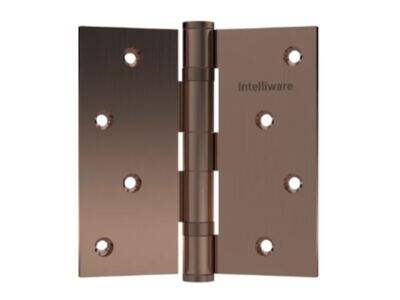Hvorfor Har Noen Svingende Dører Bare To Schar? Det er et så lite ting, men virkelig, scharer er det som holder dørene dine fungerende korrekt. Her i denne teksten, skal vi fortelle deg hvorfor noen dører ikke trenger den tredje schar, og vi skal bruke litt tid på å diskutere fordelen med å ha en dør med bare to schar. La oss se litt nærmere på hvordan Intelliware soft close henger fungerer og hvorfor de er så viktige!
Hva Er Scharer?
Imidlertid, før vi går i detaljer om funksjonene til de fleste dører med to schar, må vi vite hva scharer er og hvordan de fungerer. Scharer er metalldeltene som fester døren til dørrammen. De er dørens schar, som lar den svinge åpen og stengt. Uten scharer ville dører ikke ha kunnet bevege seg overhodet, og vi ville hatt mye problemer med å komme inn og ut av rom!
Det finnes flere deler som sammenholder scharnene for at de skal kunne oppfylle formålet. De styres av en komponent som kalles knokkel. Dette er der de to plater i scharnere møtes. En av dem er en pinne som forsterker de to plater ytterligere. Deretter er det plater. Plata tilknytter seg døren og dørstolpen. Antall scharnere på døra vil avhenge av størrelsen og vekten til den.
Hvorfor bruker noen dører bare to scharnere? Jo, ja, men det avhenger av størrelsen og vekten på døra. Dører som er mindre og lettere, som skap- eller klærromsdører, eller til og med badestedsdører, trenger ikke en tredje schar. Det eneste som virkelig er nødvendig er Intelliware selvlukkende dørhenger for å tilknytte døra rammen slik at den kan svinge åpent og lukket etter ønske uten problemer.
Store og tunge dører, som de med eksterne innganger eller store rom, krever tre scharnier eller flere for å klare dørens vekt tilstrekkelig. Uten nok scharnier på døren kan en tung dør henge nedover eller dra mot bakken. Dette gjør det veldig vanskelig å bruke døren, hvilket er virkelig irriterende!
Fordelene ved to-scharnier-dører
Trot på at dette detaljen er liten, finnes det ganske mange gode ting ved en to-scharnier-dør. Først av alt er de vanligvis billigere enn tre-scharnier-dører eller flere. Det skyldes at du trenger færre deler for å sette opp døren, så det koster mindre å lage den. Når du bygger eller reparerer noe, å spare på materialer kan være en stor hjelp.
Lett vekt også; to-scharnier-dører blir brukt. Fordi de ikke har vekten (eller scharniene) til tunge dører, er de lettere å åpne og lukke. De ville vært egnet for barn, eldrede, eller for noen som kanskje blir hindret av tunge dører. Den to-scharnier-døren gjør romgang enklere og hjelper med å unngå styrter.
Et nærmere blikk på scharnier
Så hva ser slikt slagg fra slike låser ut, for eksempel? Her er to slagg festet på motsatte ender av døren med to slag. Intelliware låsescharer garanterer også å fordele vekten jevnt med glatte åpne- og lukkebevegelser uten å vugges eller stanses på plass.
Merk at knuten er rund; hvis du noen gang får muligheten til å fjerne et slag, vil du oppdage dette. Dette lar den hengende komponenten rulle og skifte så lett som mulig, en evne som er avgjørende for frie bevegelser av døren mens den svinges åpen og stengt. Så lenge den svinger, lar den runde knuten en glad bevegelse slik at det ikke trengs for mye trykk for å åpne og lukke.
I nøtteskall, mindre og lettere dører har bare to schar. De trenger ikke en tredje for ekstra stabilitet. Dører med to schar er enklere å åpne og lukke, i tillegg til at de er billigere og lettere enn de som er tyngre, vanligvis tre eller flere schar. Å forstå hva funksjonen til en schar er, gir perspektiv på hvor viktig denne lille detaljen er. Neste gang du åpner en dør, tar du en minutte til å se på scharene – tenk på det store arbeidet som går inn i å lage hver eneste dør! Å lære hvordan disse grunnleggende delene fungerer gir oss innsikt i de rutinemessige komponentene i vår virkelighet.


